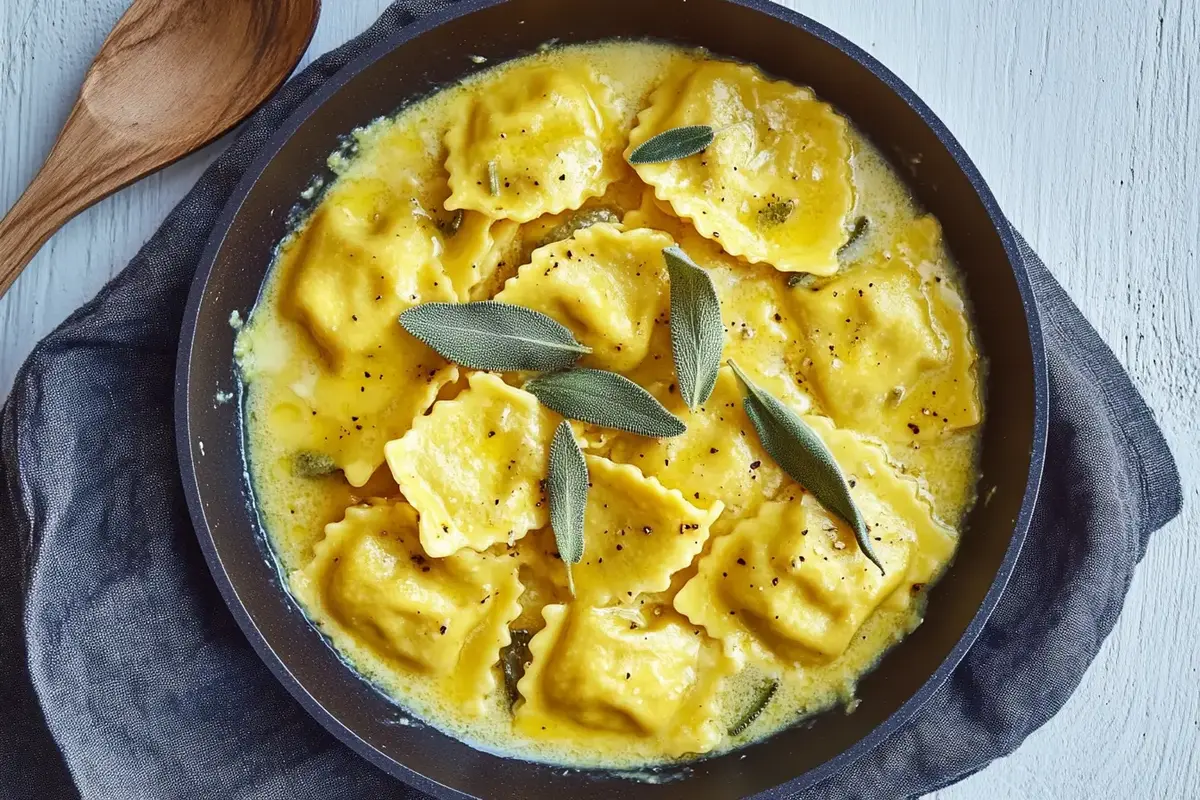Introduction
Italian cuisine has captured the hearts of food lovers worldwide, and at its core lies the comforting embrace of Italian meat ravioli. From its storied origins to modern adaptations, this dish blends the art of pasta-making with bold, flavorful fillings. This guide dives deep into ravioli, offering insights into its history, preparation techniques, and serving tips to help you recreate an authentic taste of Italy in your kitchen.
Table of Contents
Understanding Italian Meat Ravioli
Italian meat ravioli, a cherished staple of traditional Italian cooking, is not just a dish but a reflection of Italy’s culinary evolution. These tender pasta parcels, filled with savory meat, celebrate Italy’s diverse regions, each adding its unique twist to this beloved dish.
Ravioli embodies the marriage of simplicity and sophistication, a hallmark of Italian cuisine. Whether you’re enjoying “ravioli al brodo” (in broth) or topped with a luscious tomato sauce, the dish never fails to deliver comfort and satisfaction.
Historical Background of Ravioli
The history of ravioli stretches back centuries, with its first mentions appearing in 14th-century Italian manuscripts. Originally a dish for the wealthy, ravioli became a symbol of regional pride as each area adapted the recipe to reflect local tastes. In Northern Italy, for example, you’ll find meat-based fillings like pork and beef dominating recipes, while the South often incorporates more herbs and spices.
Interestingly, the term “ravioli” is thought to come from the Italian word “riavvolgere”, meaning “to wrap.” True to its name, ravioli is a humble wrapper of deliciousness, yet it also serves as a canvas for culinary creativity. Its versatility allows you to experiment with different fillings and sauces, inspiring you to create unique ravioli dishes.
The Art of Pasta Making in Italy
Pasta making is not just a technique; it’s an art form. Crafting pasta from scratch remains a cornerstone of Italian culture, passed down through generations. The dough combines eggs and flour for ravioli, but achieving the perfect texture requires practice and attention to detail.
Hand-rolled dough offers a thin, delicate casing for the flavorful filling, enhancing the overall dish. Moreover, kneading and resting the dough is critical in ensuring elasticity and a smooth finish, perfect for shaping ravioli.
This dedication to craftsmanship is why homemade Italian meat ravioli stands out—it’s the love and effort that transforms humble ingredients into culinary magic.
Ingredients and Preparation
Essential Ingredients for Meat Ravioli
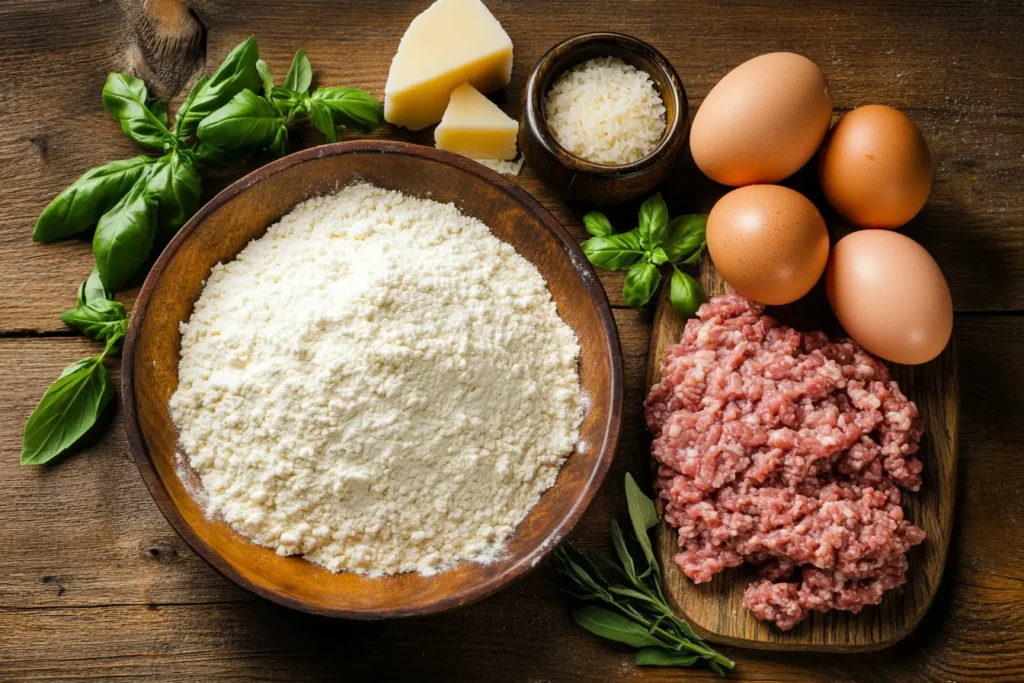
When crafting Italian meat ravioli, selecting high-quality ingredients is the cornerstone of success. The dish thrives on simplicity, so every element must shine. Here’s a breakdown of what you’ll need, and with these quality ingredients, you can be confident in creating a delicious and authentic dish.
- Pasta Dough: A blend of all-purpose flour, eggs, and a pinch of salt. Some chefs prefer adding semolina flour for added texture.
- Meat Filling: Ground beef, pork, or veal seasoned with garlic, parsley, and Parmesan cheese. Many recipes also include nutmeg for an aromatic kick.
- Sauce Options: From a classic tomato sauce to sage-infused butter, the right sauce complements the ravioli’s flavors.
- Seasonings: Salt, pepper, and fresh herbs like basil and oregano perfectly elevate the dish.
Using fresh and locally sourced ingredients makes a difference, giving the ravioli its authentic, homemade taste.
Crafting the Perfect Pasta Dough
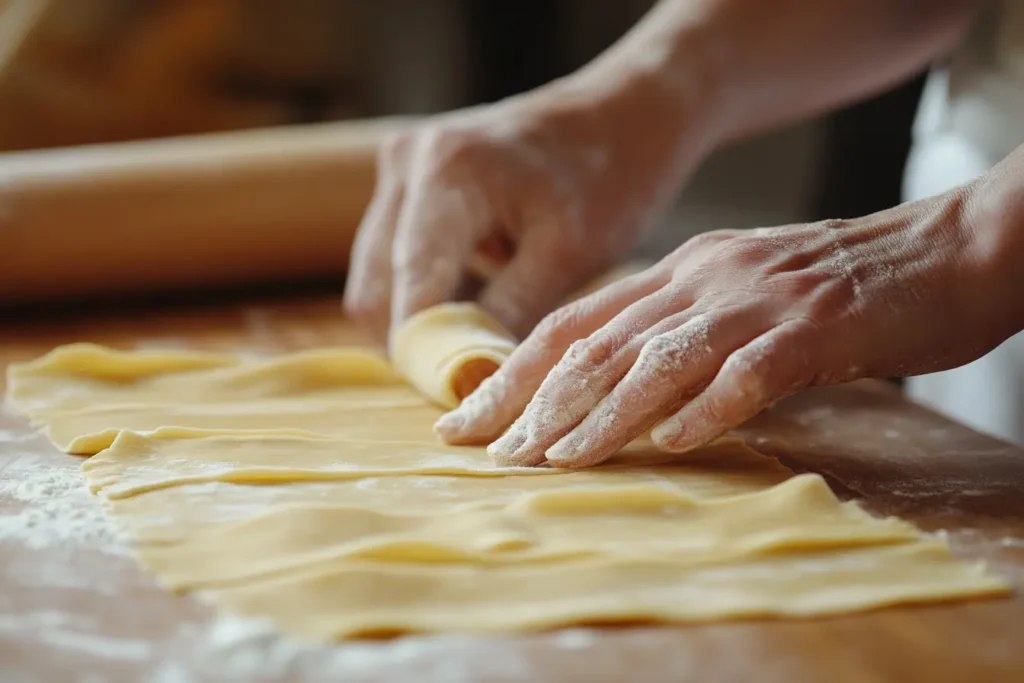
The pasta dough is where the magic of Italian meat ravioli begins. Start with 2 cups of all-purpose flour and 3 large eggs. Make a well in the center of the flour and crack the eggs into it. Gently whisk the eggs with a fork, gradually incorporating the flour.
As the mixture comes together, use your hands to knead it into a smooth, elastic dough. This process takes about 8–10 minutes, so don’t rush! Once ready, wrap the dough in plastic wrap and let it rest for at least 30 minutes. Resting relaxes the gluten, making the dough easier to roll out.
Use a pasta roller to achieve a thin, even sheet of dough for extra finesse—this ensures your ravioli won’t feel heavy or doughy.
Preparing Traditional Meat Fillings
The filling is the heart of Italian meat ravioli. Begin by sautéing onions and garlic in olive oil until fragrant. Add a mixture of ground beef, pork, and veal, cooking until browned. Season with salt, pepper, and nutmeg, then stir in Parmesan cheese and chopped parsley.
Once cooked, let the filling cool before using it to avoid breaking the pasta dough. For an extra burst of flavour, some recipes include a dollop of ricotta cheese for creaminess.
Assembling the Ravioli
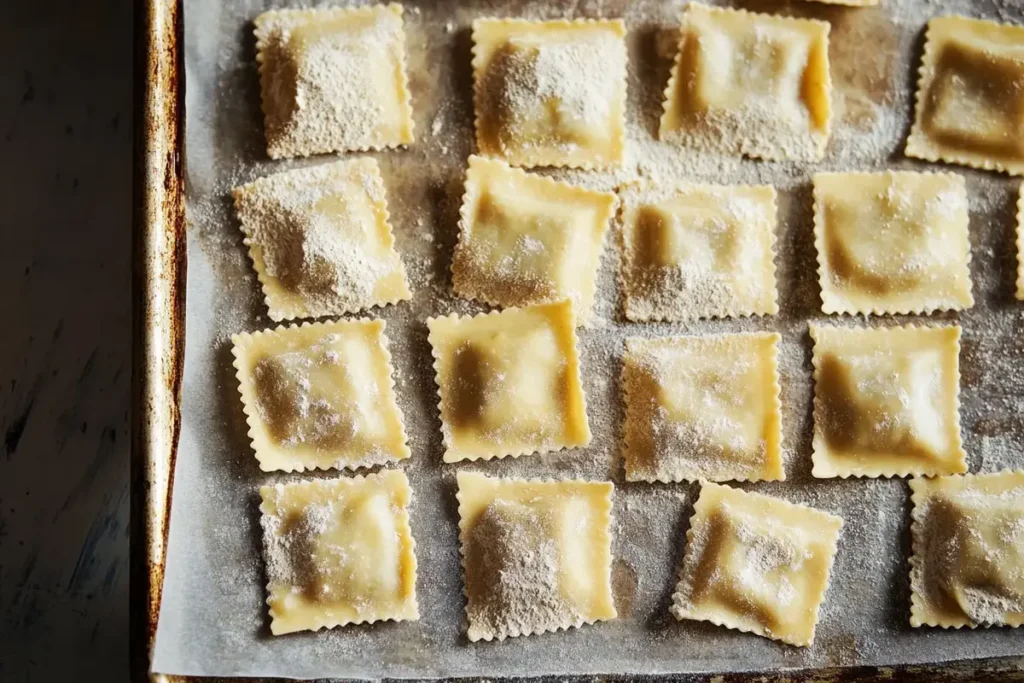
Now for the fun part—let’s assemble the ravioli! Lay out a sheet of pasta dough on a lightly floured surface. Place filling regularly using a small spoon, leaving about an inch between each dollop.
Cover with another dough sheet, pressing gently around the filling to seal. Use a ravioli cutter or knife to shape the pieces, ensuring the edges are tightly sealed. Pro tip: Lightly brush water around the filling before sealing to help the edges stick.
Cooking Methods for Ravioli
Cook the ravioli in boiling salted water for 3–5 minutes or until they float to the surface. Be gentle when stirring to avoid breaking them apart. Once cooked, transfer to a serving dish and drizzle with your preferred sauce. And voilà—your homemade Italian meat ravioli is ready to impress!
Regional Variations and Serving Suggestions
Regional Variations of Meat Ravioli
Italy’s rich culinary diversity means no one-size-fits-all recipe for meat ravioli. Each region adds its flair:
- Piedmont: Home to Agnolotti, smaller ravioli filled with roasted meats.
- Lombardy: Known for Tortelli, which often incorporates pork and amaretto cookies for a sweet-savory contrast.
- Tuscany: Features ravioli served in a hearty meat ragu, showcasing the region’s love for bold, rustic flavors.
Each variation reflects the local ingredients and traditions, making ravioli a true embodiment of Italy’s gastronomic heritage.
Traditional Sauces for Meat Ravioli
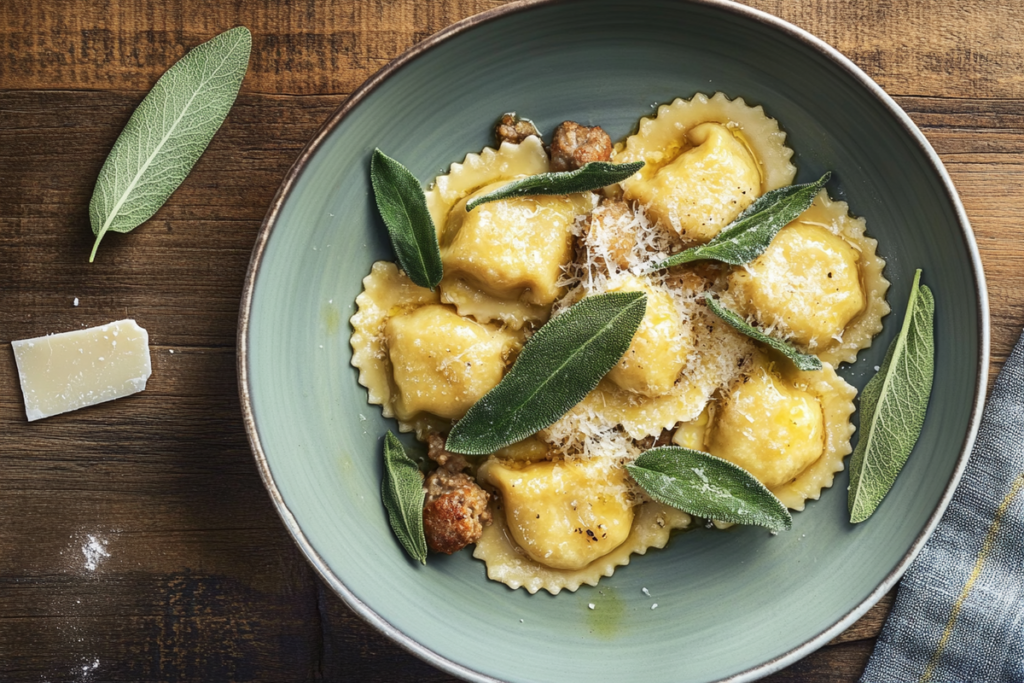
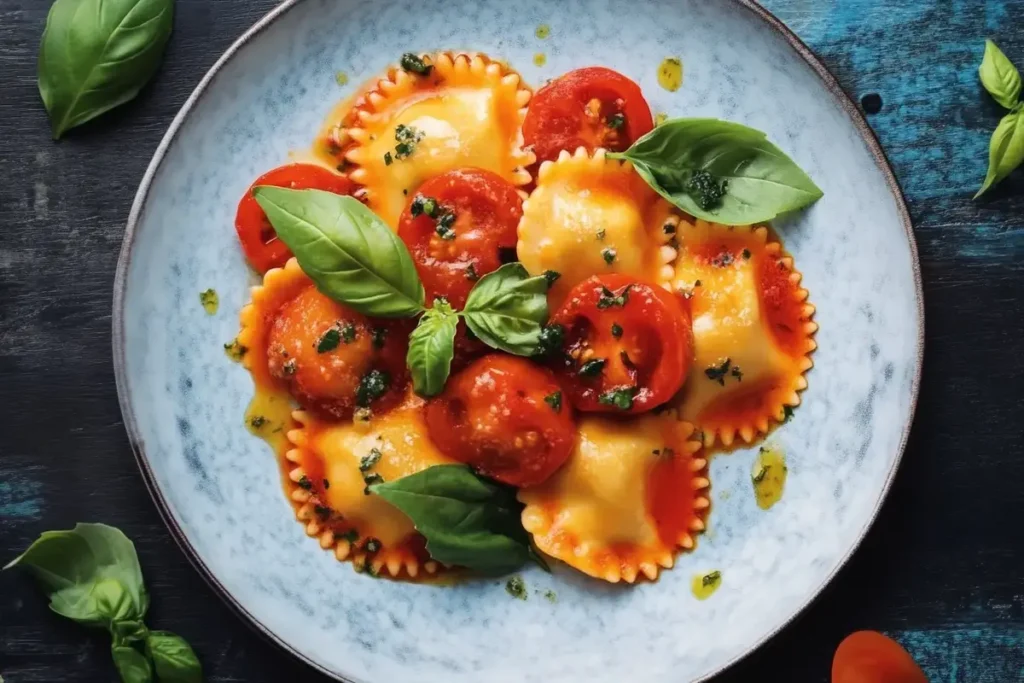
The sauce can make or break a dish. For Italian meat ravioli, these traditional options reign supreme:
- Sage and Butter Sauce: A simple yet luxurious choice that highlights the richness of the meat filling.
- Tomato Sauce: A bright and tangy companion that cuts through the heaviness of the pasta.
- Meat Broth: Perfect for serving ravioli in a soup-style presentation, especially during colder months.
Each sauce offers a unique flavor profile, so feel free to experiment!
Pairing Ravioli with Wines
Nothing elevates Italian meat ravioli like a well-chosen wine. Pair your ravioli with:
- Chianti: A classic Tuscan red with robust flavors that complement meat fillings.
- Barbera: A versatile wine with fruity notes that balance the savory richness of ravioli.
- Prosecco: For a lighter pairing, this sparkling wine adds a festive touch to the meal.
Serving Meat Ravioli: Tips and Etiquette
Presentation matters as much as taste. When serving ravioli, arrange them on a plate, spoon the sauce, and garnish with fresh herbs or a sprinkle of Parmesan. If hosting a dinner, consider serving smaller portions as an appetizer or a larger serving as a main course.
In true Italian fashion, don’t forget the bread—perfect for mopping up leftover sauce!
Homemade Ravioli: Tips and Tricks
Common Mistakes to Avoid
Making Italian meat ravioli from scratch is rewarding, but even experienced cooks can stumble. Here’s how to sidestep common pitfalls:
- Dough That’s Too Thick: Thick dough overpowers the filling and creates a heavy texture. Roll your dough thin enough to be translucent but sturdy.
- Overfilling or Underfilling: Too much filling causes ravioli to burst, while too little leaves them unsatisfying. Aim for balance—about a teaspoon of filling per piece works well.
- Improper Sealing: If the edges aren’t sealed correctly, water seeps in, ruining the filling. Use a fork to crimp the edges, or press firmly with your fingers.
- Skipping Rest Time: Both the dough and assembled ravioli need rest to maintain structure during cooking. Don’t rush!
By avoiding these mistakes, your ravioli will taste like they came straight from an Italian kitchen.
Storing and Preserving Homemade Ravioli
Whether your meal prepping or making extra, storing ravioli correctly ensures they retain their flavor and texture:
- Refrigeration: Place the uncooked ravioli in a single layer on a tray dusted with flour for short-term storage. Cover with plastic wrap and refrigerate for up to 2 days.
- Freezing: To freeze, arrange ravioli on a floured tray and freeze until solid, then transfer to an airtight container or freezer bag. They’ll keep for up to 2 months.
- Cooking from Frozen: No need to thaw! Boil the ravioli directly from frozen, adding an extra minute to the cooking time.
These techniques make it easy to enjoy Italian meat ravioli anytime without compromising quality.
Exploring Alternative Fillings and Dietary Options
While traditional meat fillings are classic, ravioli is incredibly versatile. Here are some creative alternatives:
- Vegetarian Options: Spinach, ricotta, or wild mushroom fillings are perfect for plant-based diets.
- Seafood Ravioli: Crab or lobster fillings add an elegant touch, often with a light butter sauce.
- Gluten-Free Variations: Use gluten-free flour blends to create dough suitable for those with dietary restrictions.
- Vegan Ravioli: Replace eggs in the dough with “aquafaba” (chickpea water) and use cashew-based ricotta to fill.
These adaptations ensure that everyone can enjoy the comforting flavours of ravioli.
Frequently Asked Questions (FAQs)
What is the origin of Italian meat ravioli?
Italian meat ravioli dates back to the 14th century and has roots in the Italian word “riavvolgere“, meaning “to wrap.” Each region of Italy has its interpretation of the dish, reflecting local ingredients and traditions.
How do I prevent ravioli from bursting during cooking?
Prevent bursting by using thin yet sturdy dough to seal the edges tightly. Additionally, avoid overfilling and be gentle when stirring ravioli in boiling water.
Can I use store-bought dough to make ravioli?
Yes, store-bought dough, such as wonton wrappers, can save time. However, the flavor and texture of homemade dough are unmatched and well worth the effort.
What are some vegetarian alternatives to meat fillings?
Vegetarian fillings like spinach and ricotta, roasted butternut squash, or wild mushroom blends make delicious and satisfying substitutes.
How should I store leftover cooked ravioli?
Store cooked ravioli in an airtight container in the refrigerator for up to 3 days. Reheat gently in a saucepan with a splash of water or sauce to keep them moist.
What sauces pair best with meat ravioli?
Classic pairings include sage and butter, tomato-based sauces, or a hearty meat ragu. Each sauce complements the rich, savory filling in its way.

